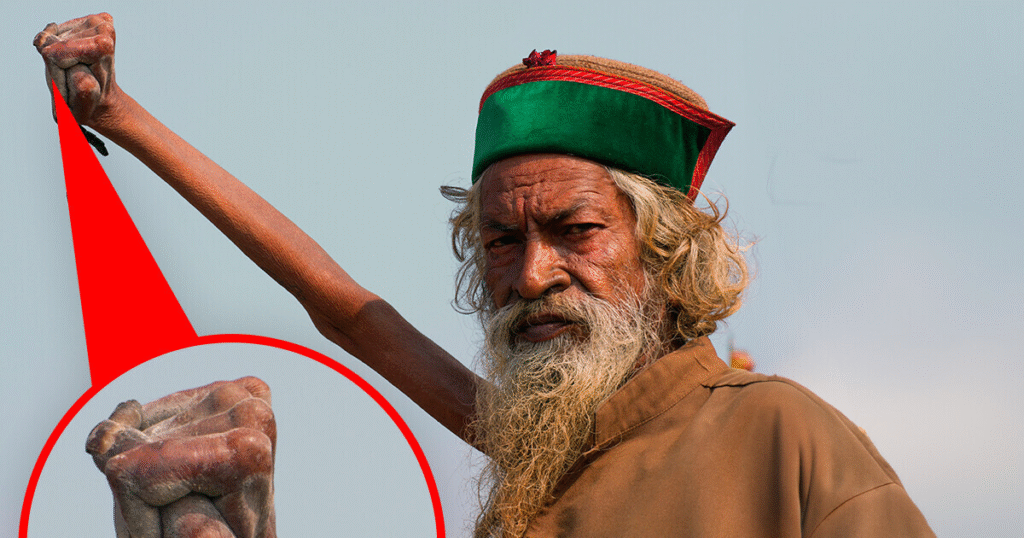A Journey Gone Wrong… But Saved Her Life- Student missed the Air India crash by just 10 minutes

What started as a frustrating travel day for Bhoomi Chauhan became a moment of divine intervention. Bhoomi, a 28-year-old business administration student living in Bristol, was visiting her homeland in western India for a short holiday. She was supposed to return to the UK on Thursday via Air India flight AI171 from Ahmedabad to London Gatwick. However, her car journey from Ankleshwar to Ahmedabad, around 201 km, was delayed due to heavy traffic in the city centre. Despite her best efforts, Bhoomi reached the airport just 10 minutes after the airline had closed the boarding process. To her disbelief, airline staff refused to let her board, even though she had checked in online and her digital boarding pass clearly showed her assigned economy seat, 36G. The Frustration of Missing a Flight Bhoomi remembers being angry and disappointed. “We got very angry with our driver and left the airport in frustration,” she recalled while speaking to the BBC Gujarati service. She and her husband stepped away from the airport to have some tea and discuss the next steps with their travel agent to get a refund. It was then that she received the shocking phone call: the flight she had just missed had crashed. “I was very disappointed for missing the flight, but when I got the call… it was unbelievable. This is totally a miracle for me,” she said, still shaken by the narrow escape. Tragic Turn: Flight AI171 Crashes Air India flight AI171, which Bhoomi missed by just minutes, took off from Ahmedabad as scheduled. But something went wrong. Just 30 seconds after take-off, the plane failed to gain altitude and crashed into a nearby residential area. The crash killed all 241 passengers and 12 crew members on board. At least eight people on the ground were also reported dead, with several others injured. One British passenger, Vishwashkumar Ramesh, miraculously survived the crash and is recovering in the hospital. Among the deceased were 53 Britons, including families from Gloucester and London, as well as a couple who ran a spiritual wellness centre in the capital. Indian, Portuguese, and Canadian nationals were also among the victims. Questions, Grief, and Investigations Emergency services and rescue workers responded swiftly, working into the night to clear the wreckage and assist survivors and families of the victims. The cause of the crash is still under investigation, but reports suggest the aircraft struggled shortly after lift-off. Investigators are focusing on technical aspects of the plane and its performance, as well as maintenance history and possible pilot error. The aviation world is watching closely as the crash raises serious questions for Boeing, the manufacturer of the aircraft involved. The Weight of a Close Call For Bhoomi Chauhan, the tragedy serves as a painful reminder of how life can change in moments. The anger she felt at missing her flight has been replaced with shock and gratitude. “Only one thing was going through my mind,” she said. “‘If I had started a little earlier, I would have been on that plane.’” She will never forget that day. Missing her flight might have been frustrating at first, but in the end, it saved her life. This story reminds us of the unpredictability of life, the power of fate, and the importance of every small decision. While the world mourns those who lost their lives, Bhoomi Chauhan’s story stands as a miraculous escape from one of the deadliest air disasters in recent Indian aviation history
Row 11, Seat A: The Survival Story—Vishwash Kumar Ramesh

On June 12, 2025, Air India Flight AI171, a Boeing 787-8 Dreamliner with 242 souls aboard, departed Ahmedabad for London Gatwick. Within thirty seconds of takeoff, witnesses reported hearing “a thunderous bang” as the aircraft suddenly lost altitude and crashed into a medical college dormitory adjacent to the airport. The tragedy claimed over 240 lives both in the air and on the ground, marking it as the most catastrophic aviation disaster in ten years. Against all odds, a single passenger survived: Vishwash Kumar Ramesh, a 40-year-old British citizen of Indian heritage, who had been seated in 11A. “When I got up, there were bodies all around me… I stood up and ran.”—Vishwash Kumar Ramesh, from his hospital bed reuters.com Seat Location and Layout Seat 11A occupied a window position on the port side of the Dreamliner’s economy section. This particular row aligned directly with the L2 emergency door, positioning it within the aircraft’s forward section. The seat configuration provided enhanced legroom due to its proximity to the exit row, with no seat positioned directly ahead. Critical Survival Factors Emergency Exit Proximity The seat’s location placed Ramesh within immediate reach of the L2 door, one of the primary forward exits on the Boeing 787-8. Research from the University of Greenwich demonstrates that passengers seated within five rows of an exit possess substantially higher evacuation success rates. The reduced travel distance to safety proved crucial in this catastrophic scenario. Structural Advantages Emergency exit areas feature reinforced construction elements that provided several protective benefits: The enhanced legroom allowed for optimal brace positioning during impact, potentially reducing injury severity. Without a forward seat obstruction, the risk of secondary collision injuries was minimized. The reinforced fuselage sections surrounding emergency doors, designed to support evacuation slide deployment, likely absorbed significant crash forces and provided additional structural integrity during the aircraft’s breakup. Cabin Positioning Benefits Seat 11A’s forward location offered strategic advantages beyond mere exit proximity. Positioned away from the wing-mounted engines, Ramesh faced reduced exposure to fuel-related fire hazards. The seat’s location near crew stations potentially enabled faster assistance during the evacuation process. Additionally, this area sits along a structural ring frame where fuselage integrity typically remains stronger during crash scenarios. Passenger Density Considerations The transition zone between business and economy classes typically maintains lower passenger density compared to mid-cabin areas. This reduced crowding likely contributed to less evacuation obstruction and decreased chaos during the emergency egress. Aviation Safety Research Findings Historical Data Analysis A comprehensive TIME magazine analysis of 17 U.S. aviation accidents between 1985 and 2000 revealed that rear-middle seats demonstrated a 28% fatality rate compared to 44% for mid-cabin aisle positions. However, the “five-row rule” established through simulation studies shows that proximity to any exit remains the most critical factor for successful evacuation. Structural Considerations Seats positioned behind wing structures benefit from additional structural support but face trade-offs due to their location above fuel storage areas. The risk assessment depends heavily on impact dynamics and fire development patterns. Emergency Exit Seat Responsibilities Passengers occupying emergency exit rows accept specific duties during evacuations, including door operation and passenger assistance. Regulations restrict these seats from children under 12, individuals with mobility limitations, and passengers traveling with infants. These seats typically offer additional legroom but may experience cooler cabin temperatures and require earlier boarding procedures. Practical Safety Recommendations Seat Selection Strategy When possible, choose seating within five rows of any emergency exit, with rear-middle positions showing the strongest historical survival statistics. Safety Preparation Maintain proper seatbelt positioning throughout the flight, keeping it low and secure. Count the rows to nearest exits to enable navigation in zero-visibility conditions. Keep footwear on during takeoff and landing phases. Emergency Response Adopt the brace position immediately upon crew instruction or at the first indication of emergency. Abandon all personal belongings during evacuation, as luggage retrieval significantly delays escape and reduces survival chances. Aviation Safety Context Despite this tragic incident, commercial aviation maintains exceptional safety records. The 2023 worldwide statistics show 16 fatal accidents among 37 million flights, representing approximately one crash per 2.3 million departures. Individual lifetime odds of aviation fatality remain around 1 in 8 million passenger flights, significantly lower than routine activities like automobile travel. Conclusion Seat 11A provided Ramesh with optimal survival conditions through its combination of exit proximity, structural reinforcement, and reduced passenger density. However, his survival resulted from multiple factors including seat positioning, proper safety belt use, quick decision-making, and considerable fortune. While strategic seat selection and safety awareness can improve survival odds, they complement rather than replace the comprehensive safety systems that make commercial aviation among the world’s safest transportation methods.
All 242 passengers on board an Air India flight have died after the plane crashed near Ahmedabad airport

All 242 passengers on board an Air India flight have died after the plane crashed near Ahmedabad airport All 242 passengers on board an Air India flight have died after the plane crashed near Ahmedabad airport on Thursday, the city’s police chief has confirmed. The plane en route to London crashed minutes after taking off from Ahmedabad airport on Thursday afternoon. Many people are feared dead after an Air India flight bound for London. There are 169 Indian nationals, 53 British nationals, seven Portuguese nationals and one Canadian national among them. According to Air India, 242 passengers and crew members were on board the Boeing 787-8 flight from Ahmedabad to London Gatwick. The flight, a Boeing 787-8, took off from Ahmedabad at 1338 hrs with 242 passengers and crew members on board, Air India said in a statement on its social media platform ‘X’.The airline said the injured were being taken to the nearest hospitals. “We have also set up a dedicated passenger hotline number 1800 5691 444 to provide further information,” it said. Air India also said it would provide full cooperation to the authorities investigating the incident.
The Man Who Raised His Arm for Peace — And Never Put It Down

The Incredible Story of Sadhu Amar Bharati: The Man With His Arm Raised Since 1973 In a world where people make statements through protests, petitions, and social media, one Indian man made his declaration in an almost unimaginable way: by raising his right arm — and never lowering it again. Sadhu Amar Bharati, a devout Hindu and former clerk from New Delhi, has been holding his arm aloft since 1973 — over five decades — in a silent and powerful gesture of devotion and peace. A Life-Altering Decision In the early 1970s, Amar Bharati was living a fairly conventional life. He had a job, a family, and a normal daily routine. But in 1970, he left everything behind to dedicate himself fully to Lord Shiva, one of the principal deities of Hinduism. Three years into his spiritual journey, he felt the need to do something drastic to show his unwavering devotion. In 1973, he raised his right arm in reverence — and has kept it lifted ever since. Endurance of the Human Will Today, Amar Bharati’s raised arm is thin, atrophied, and mostly immobile. His fingernails have grown into twisted spirals, and his shoulder joint has likely fused due to disuse. Despite the obvious discomfort, he claims to feel no pain now — only numbness. What may seem like a self-inflicted punishment to outsiders is, to him, an act of spiritual commitment and a symbol of peace. In interviews, he has said that his gesture is meant to be a message against war and conflict — and a plea for unity among all people. Inspiration to Many Sadhus Amar Bharati’s act of spiritual discipline has inspired many followers and fellow sadhus (holy men). Some have even taken on similar challenges, such as standing for months or fasting for years. In India’s tradition of extreme spiritual devotion, his gesture is regarded with awe and respect. Why Did He Do It? In his own words, Amar Bharati felt that life had become too self-centered and materialistic. By raising his arm, he intended to renounce worldly pleasures and dedicate his existence to a higher cause — a practice rooted in the ancient ascetic traditions of India. He doesn’t seek fame, fortune, or followers — just peace. “I am not asking for much,” he once reportedly said. “Why can’t we all live in peace?” A Living Legend Now in his 70s, Amar Bharati is regarded by many as a living legend and symbol of spiritual strength. He occasionally appears at religious gatherings and festivals, where he is revered by fellow spiritual seekers. Whether viewed as a saint or an enigma, Amar Bharati’s story reminds the world of the incredible things human beings can endure — and the extraordinary lengths some will go to for their beliefs. Did You Know? Conclusion In a fast-paced world hungry for instant gratification, Sadhu Amar Bharati stands as a testament to endurance, faith, and the boundless power of human will. His silent act speaks louder than a thousand words — a hand raised not in anger, but in eternal prayer for peace.
This Country Is Secretly Winning the Tech War — And No One’s Talking About It!

While the U.S. and China dominate headlines, this underdog nation is quietly building a tech empire that could change the global balance. In the global tech arms race, everyone watches Silicon Valley and Shenzhen. But 2025 might be the year another unexpected player takes the lead — and it’s not who you think. Tucked between the giants, Estonia — yes, the small Baltic country — has emerged as a digital superpower, revolutionizing everything from how governments work to how people vote, live, and start businesses. While many countries still rely on paper documents, Estonia’s citizens can do almost anything online: vote, pay taxes, open bank accounts — all in minutes. With over 99% of public services digitized, Estonia isn’t just paperless — it’s borderless. But that’s not all. Why Estonia Is Outpacing Giants: 💡 e-Residency Program: Anyone in the world can become a digital citizen of Estonia and start a business there — remotely. 🔐 Cybersecurity First: After a massive cyberattack in 2007, Estonia built the world’s most advanced digital defense system. 🧠 AI Integration: Estonia is using artificial intelligence in courtrooms to handle minor claims faster than human judges. The Takeaway? The next big thing in tech may not be coming from a big place. Estonia proves that innovation isn’t about size — it’s about vision. While superpowers fight for headlines, this tiny country is quietly building the future.
10 Effective Sleeping Tips for a Better Night’s Rest

Sleep is essential for physical health, emotional well-being, and cognitive performance. Yet, many people struggle with falling asleep or staying asleep throughout the night. If you find yourself tossing and turning or waking up groggy, here are 10 practical sleeping tips to help improve your sleep quality and restore your energy. 1. Stick to a Consistent Sleep Schedule Go to bed and wake up at the same time every day—even on weekends. Consistency reinforces your body’s natural circadian rhythm, making it easier to fall asleep and wake up naturally. 2. Create a Calming Bedtime Routine Engage in relaxing activities before bed, such as reading, meditation, or taking a warm shower. These rituals signal your brain that it’s time to wind down, reducing stress and preparing your body for sleep. 3. Limit Screen Time Before Bed Blue light from phones, tablets, and TVs can interfere with melatonin production—the hormone that regulates sleep. Try turning off screens at least 30–60 minutes before bedtime. 4. Watch What You Eat and Drink Avoid heavy meals, caffeine, and alcohol close to bedtime. Caffeine can stay in your system for up to 8 hours, and alcohol, though it may make you sleepy initially, can disrupt the quality of your sleep. 5. Optimize Your Sleep Environment Make your bedroom cool, quiet, and dark. Consider blackout curtains, white noise machines, or a sleep mask. Also, ensure your mattress and pillows are comfortable and supportive. 6. Limit Naps During the Day While short power naps (20–30 minutes) can be refreshing, long or irregular naps during the day can confuse your internal clock and make it harder to sleep at night. 7. Exercise Regularly Physical activity helps you fall asleep faster and sleep more deeply. However, try to finish your workouts at least a few hours before bedtime so your body has time to wind down. 8. Manage Stress and Anxiety Mindfulness, journaling, breathing exercises, or even speaking with a therapist can help calm a racing mind. Emotional well-being plays a major role in sleep quality. 9. Avoid Clock-Watching Staring at the clock when you can’t sleep increases stress. If you can’t fall asleep after 20 minutes, get out of bed and do something relaxing in dim light until you feel sleepy again. 10. Seek Professional Help if Needed If you’ve tried these tips and still struggle with sleep, consult a doctor or sleep specialist. Conditions like insomnia, sleep apnea, or restless legs syndrome may require medical attention. Conclusion: Good sleep is not a luxury—it’s a necessity. With small but consistent changes to your daily habits and sleep environment, you can dramatically improve your sleep and overall health.
Pope Leo XIV: First American Pontiff Makes History

Cardinal Robert Francis Prevost has made history as the first pope from the United States, now known as Pope Leo XIV, becoming the 267th leader of the world’s 1.4 billion Catholics. The 69-year-old Chicago native greeted thousands of cheering faithful from the balcony of St. Peter’s Basilica on Thursday evening with the words: “Peace be with you all.” In his inaugural address, Leo paid tribute to his predecessor Pope Francis while outlining his vision for the Catholic Church. “We have to seek together to be a missionary church. A church that builds bridges and dialogue,” he declared in Italian, calling on people to “show our charity” to others “and be in dialogue with love.” Leo’s selection came swiftly, just two days after 133 cardinals gathered in conclave, suggesting he quickly earned the confidence of his peers during the secretive process. Observers expect him to continue building upon Francis’ reforms while potentially establishing his own distinct papal style. Background and Experience Prior to his elevation, Prevost headed the influential Vatican Dicastery for Bishops, where he assessed candidates for episcopal appointments. He simultaneously served as president of the Pontifical Commission for Latin America, reflecting his deep connections to the region. As a member of the Augustinian order, Prevost spent over a decade as its prior general, managing operations across the globe. His missionary work took him to Peru for ten years, and he later served as bishop of Chiclayo from 2014 to 2023, even becoming a Peruvian citizen in 2015. During his first address as pope, Leo notably switched from Italian to Spanish to address his “beloved diocese” in Chiclayo. Peruvian President Dina Boluarte celebrated his election as a “historic moment for Peru and the world,” noting how he “sowed hope, walked alongside the most needy, and shared the joys of our people.” In the United States, President Donald Trump called the news a “great honor” for America, while Vice President JD Vance expressed that “millions of American Catholics and other Christians will pray for his successful work leading the Church.” A Global Perspective Vatican analysts suggest Prevost’s extensive international experience helped overcome traditional reluctance to select an American pope. “He’s somebody that, even though he’s from the West, would be very attentive to the needs of a global church,” noted CNN Vatican analyst Elise Allen, who described him as “calm and balanced” and “evenhanded” in leadership. Prevost’s educational background includes a bachelor’s in mathematics from Villanova University and theological training at the Catholic Theological Union of Chicago. He later studied canon law in Rome and taught the subject in Peru. In a previous interview with Vatican News, Prevost emphasized his missionary identity: “I still consider myself a missionary. My vocation, like that of every Christian, is to be a missionary, to proclaim the Gospel wherever one is.” Challenges Ahead The new pontiff faces significant challenges, including navigating the Church through the upcoming jubilee year while determining whether to continue Francis’ more progressive approach to social issues. His papacy begins amid ongoing global conflicts, rising populism, and the Church’s unresolved sexual abuse crisis. Regarding the inclusion of women in Church governance, Prevost has previously stated: “There is a real, genuine, and meaningful participation that they offer at our meetings when we discuss the dossiers of candidates.” On addressing clerical abuse, he acknowledged: “There are places where good work has already been done for years and the rules are being put into practice. At the same time, I believe that there is still much to learn.” As Leo XIV begins his papacy, he inherits both the transformative legacy of his predecessor and the responsibility to guide the Catholic Church through complex global challenges while addressing internal reforms that remain incomplete.
Pakistan minister warns of possible Indian military strike in 24-36 hours

Pakistan’s minister for information and broadcasting says Islamabad has “credible intelligence” that India intends to launch a military strike within the next 24 to 36 hours, as tensions between the two countries escalate following a deadly attack in Indian-administered Kashmir. In a social media post early on Wednesday, Attaullah Tarar accused India of using last week’s attack in Pahalgam, which killed 26 tourists, “as a false pretext” to potentially strike Pakistan. The minister did not provide any concrete information to back up his claim, and the Indian government did not immediately comment publicly on the allegations. “Any act of aggression will be met with a decisive response. India will be fully responsible for any serious consequences in the region,” Tarar said in the post on X. Pakistani Minister of Defence Khawaja Muhammad Asif also told the Reuters news agency on Monday that a military incursion by India was “imminent”. Islamabad is on high alert but will only use its nuclear weapons if “there is a direct threat to our existence”, Asif said. India’s Ministry of External Affairs did not immediately respond to a request for comment from the Reuters news agency on the latest remarks from Tarar. Tensions between the two countries have been rising after India said there were Pakistani elements linked to the attack on April 22 in the mountain resort of Pahalgam. It was the deadliest attack on tourists in Indian-administered Kashmir in more than two decades, and Indian Prime Minister Narendra Modi has promised to pursue the attackers. A statement issued in the name of The Resistance Front (TRF), which is believed to be an offshoot of the Pakistani-based Lashkar-e-Taiba, claimed responsibility for the attack. But Islamabad has denied any role in what happened and called for a neutral investigation. After the attack, the neighbours unleashed a raft of diplomatic measures against each other, including visa revocations and the closure of Pakistani airspace to Indian airlines. India also suspended its participation in the Indus Waters Treaty, which regulates water-sharing from the Indus River and its tributaries between the two countries. The move spurred protests in Pakistan, and the Pakistani government has said it is preparing legal action over New Delhi’s decision. Fire also has been exchanged along the Line of Control (LoC), the 740km (460-mile) de-facto border separating Indian- and Pakistani-controlled areas of Kashmir, prompting international calls to de-escalate tensions. On Tuesday, the United States urged the two countries to work towards a “responsible solution”. “We are reaching out to both parties, and telling … them to not escalate the situation,” a Department of State spokesperson told reporters, quoting a statement by Secretary of State Marco Rubio. The spokesperson added that Rubio would speak to the foreign ministers of India and Pakistan on Tuesday or Wednesday and encouraged other foreign ministers to do the same. The United Nations also said Secretary-General Antonio Guterres spoke with Pakistani Prime Minister Shehbaz Sharif and Indian Minister of External Affairs Subrahmanyam Jaishankar and “underscored the need to avoid a confrontation that could result in tragic consequences”. (Al Jazeera)
Young student earns Top Results in Both O/L & A/L Exams in 2024

Ranuli Wijesirwardhana, a student of Visakha Vidyalaya, Colombo, has achieved remarkable success by completing both the G.C.E. Ordinary Level and Advanced Level examinations within the same year. In May 2024, Ranuli sat for the 2023 (2024) G.C.E. Ordinary Level examination, earning 8 As and 1 B, with the B in English Literature. Just a few months later, in November 2024, she took the G.C.E. Advanced Level examination in the Physical Science stream, securing 3 As and achieving an impressive island rank of 963. While completing her Grade 10 studies, Ranuli simultaneously prepared for the A/L curriculum. Since students below a certain age are not permitted to sit for the A/L examination through school enrollment, she withdrew from formal schooling and completed the exam as a private candidate. Her father, a teacher with 20 years of experience, emphasized that Sri Lanka’s education system should provide greater flexibility for gifted students to advance faster. He noted that while graduates in Sri Lanka typically enter the workforce at 26 or 27 years old, graduates in other countries often do so by 21 or 22, and that accelerating educational pathways would benefit both individuals and the national economy. Ranuli’s extraordinary achievement has reignited discussions on the need for reforms to better support and nurture exceptionally talented students.
Massive Waste Surge Hits Kandy Following Sacred Tooth Relic Exposition

Following the prestigious ‘Siri Dalada Vandanawa’ special exposition, an overwhelming 625 tonnes of waste has accumulated at Kandy’s Gohagoda landfill, creating significant environmental challenges for the historic city. During a recent inspection of the increasingly strained facility, Kandy Municipal Commissioner Indika Kumari Abeysinghe announced plans to collaborate with the Colombo Municipal Council to incinerate the massive waste buildup. The sacred Tooth Relic exposition, which lasted 10 days and marked the first such ceremony in 16 years, was organized at the request of President Anura Kumara Dissanayake. The event attracted thousands of devotees to Kandy, resulting in heavily littered streets that prompted numerous public and private organizations to volunteer for cleanup efforts. This waste management crisis compounds Kandy’s existing disposal challenges, as the city continues to struggle with limited landfill capacity. The infrastructure for managing waste disposal faced unprecedented pressure due to the scale of this significant cultural and religious event.
